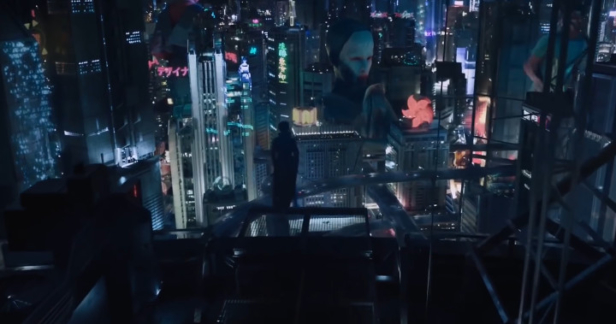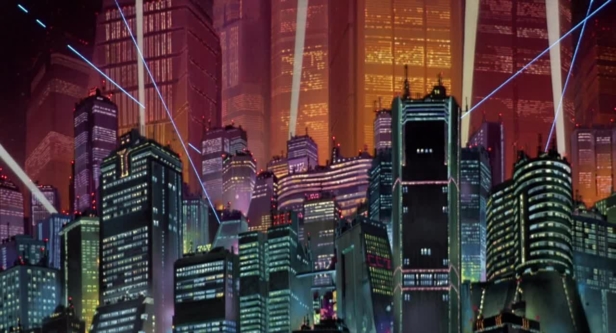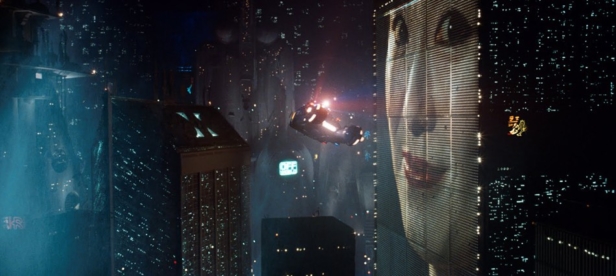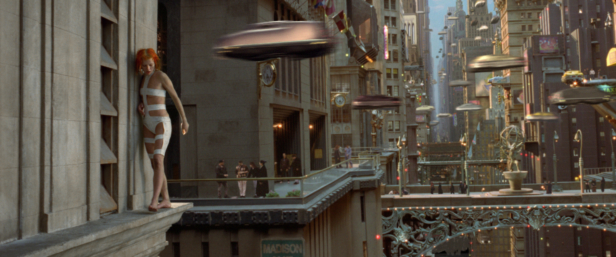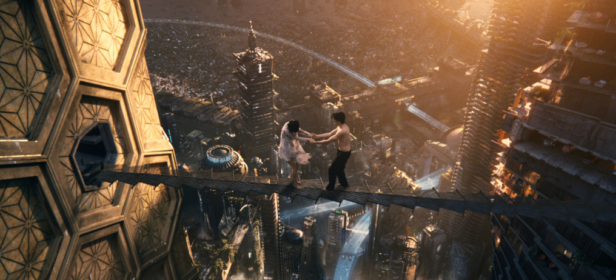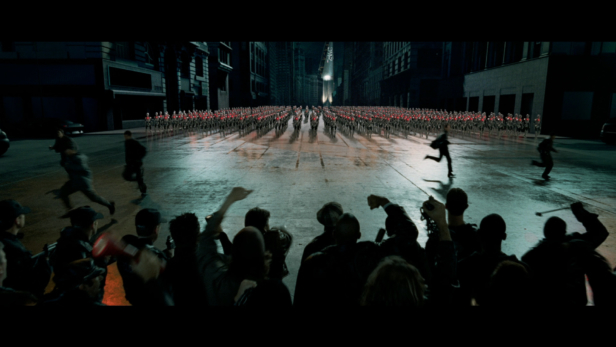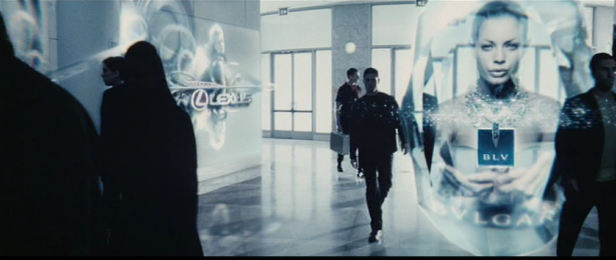The future will always be something of the unknown. But it’s sometimes nice to pretend we have the answers by looking to films to give us some kind of a visual idea. Whether it’s classic science fiction, big budget movies released in the ‘90s, or more recent efforts, one recurring theme plays a major role – technology. It seems futuristic cities have become saturated with holograms, robots and flying cars. In Ghost In The Shell Rupert Sanders has poured his own vision into the seminal Manga classic to make it something entirely recognisable and yet unique.
Inspirations in Sanders’ vision can be seen from a rich history of cinema so we’ve taken a look back at some classic futuristic cities in film.
AKIRA
Created in 1988, Akira takes place in 2019 Neo-Tokyo following a mysterious atomic explosion. Compared to many other films’ futuristic cities, Akira is subdued with its predictions. The new city is filled – nearly beyond capacity – with skyscrapers, giving it a more modern appearance especially in contrast to the old Tokyo just separated by a bridge. Akira’s foreboding prescience of a not-too-far-off overpopulated metropolis makes this futuristic city one to condemn rather than celebrate for its memorable decadence.
BLADE RUNNER
Another film taking place in 2019, Blade Runner gives a prediction of what the future has in store for Los Angeles. Going the opposite direction of Akira, this 1982 film goes all out depicting the future as a technology controlled metropolis. In a world where robots live hidden among humans, flying cars soar above the overcrowded streets and a world where interstellar travel is a reality. Would we want to live there, probably not, but how much longer until this future becomes our reality as well as Deckard’s?
THE FIFTH ELEMENT
The Fifth Element tells a story in the 23rd century when the survival of Earth rests in the hands of five alien elements and Bruce Willis. As Earth prepares to repel an impending attack from pure evil, we get a glimpse into 23rd century life in New York City. The most prevalent image in Luc Besson’s sci-fi adventure is a world riddled with the scars of environmental mistreatment and the capitalist evolution of 80th floor McDonald’s drive-thrus.
CLOUD ATLAS
We get a look into multiple points of the future in this 2012 film, which contains stories across 6 different eras. In the year 2144, Neo-Seoul is the replacement of South Korea’s capital, which was destroyed by a natural disaster. Not unlike what we see in Blade Runner, the city is packed with skyscrapers and flying cars. Holographic “roads” guide the hovering vehicles and many of the workers of the city are humanoids, known as ‘fabricants,’ that have been programmed without feelings. A bitter sweet future awaits, it may look beautiful but the level of control has increased dramatically.
I, ROBOT
A recurring theme of these films, the future shown in I, Robot involves a world where humanity is served by robots. In Chicago in the year 2035, humanoid robots are not just frequent in society, but an everyday part of life. The Three Laws of Robots protects humans from harm as it states that robots cannot hurt or endanger a human – but this was not as foolproof as some believed. Similar to others we’ve seen, the city in I, Robot is filled with skyscrapers and digital billboards. Walking the streets, you’d frequently be passed by humanoids casually living amongst humans. The Three Laws prove to be faulty when the co-founder of U.S. Robots and Mechanical Men is thrown out of his skyscraper office by a robot. If that’s not a good enough lesson to be cautious of artificial intelligence, then what is?
MINORITY REPORT
Minority Report takes place in the year 2054 in Washington D.C. The murder rate has been reduced to zero thanks to a program known as PreCrime run by mutated humans known as ‘Precogs’ that can predict a murder and arrest the criminal prior to the crime. Sounds like the perfect solution – so much so that the federal government considered adopting the program. That is, of course, until people become aware of its faults. With the predictions, people had the ability to change the course of the future and work around the system. Throughout the film, we get a glimpse into the futuristic D.C complete with hovercrafts and pod-like automobiles filling the highways. A cool and sleek design of the city, but we think we’ll do without the PreCrime led government turmoil.
GHOST IN THE SHELL
Ghost In The Shell tells the tale of Major (Scarlett Johansson), a cyber-enhanced commander of Section 9, devoted to stopping the most dangerous cyber-criminals. Based on the popular and internationally acclaimed Japanese Manga, ‘The Ghost in the Shell’, this latest outing sees the Major in a not-too-distant future battling her own inner demons set against the backdrop of a neon-tinged cityscape where cyber crime is rife in the modern world.
Ghost In The Shell is in cinemas on 30th March. Keep up with the latest genre news with the new issue of SciFiNow.
